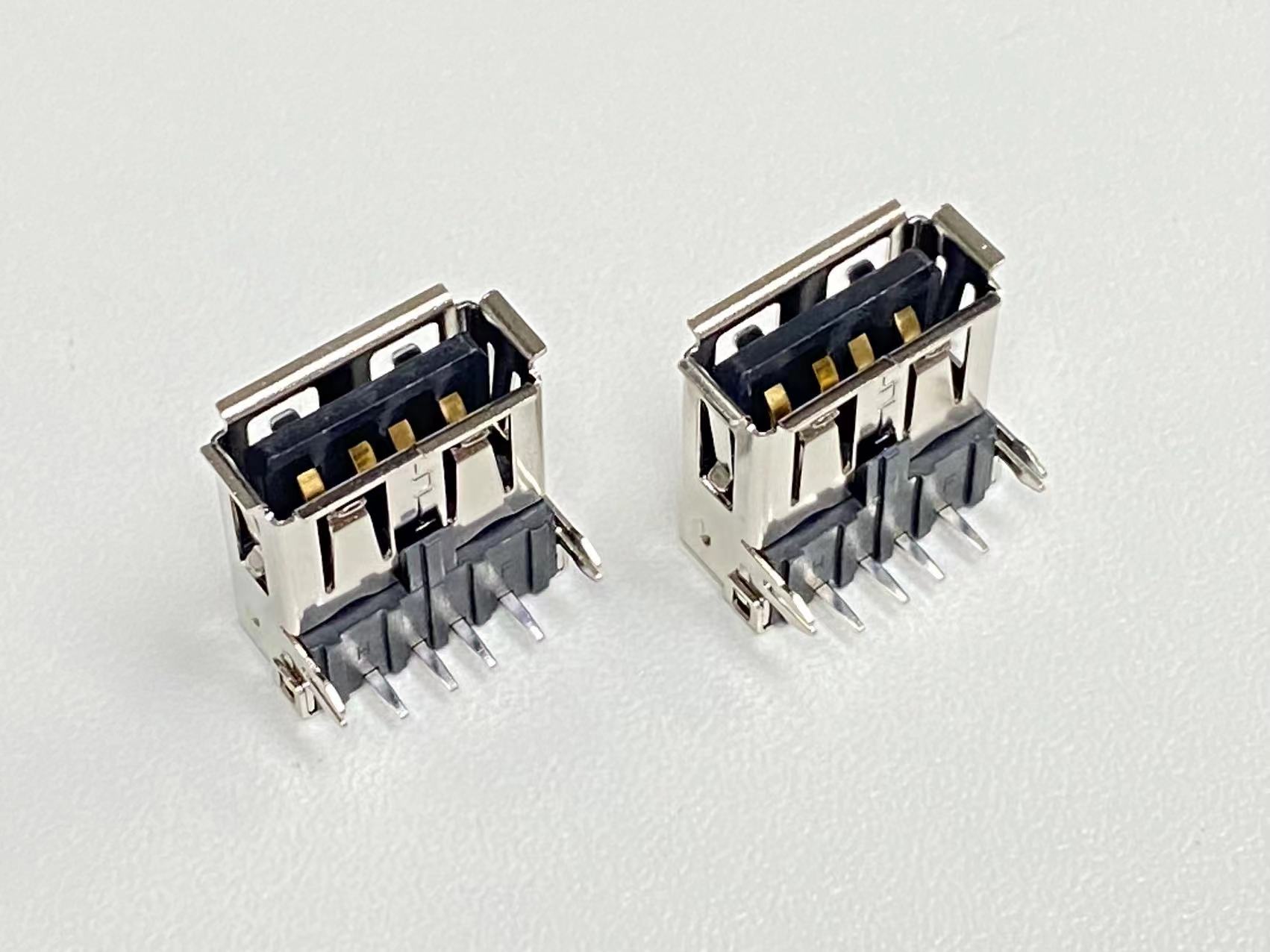USB 2.0 A Type Female R/A DIP (Dual In-line Package) connectors are commonly used in various electronic devices for reliable data transfer and connectivity. Despite their robust design, users may encounter performance and connectivity issues that can impact functionality. This guide provides expert advice on troubleshooting and resolving common problems associated with USB 2.0 A Type Female R/A DIP connectors.

1. Poor or No Connectivity
Problem: Devices connected through the USB 2.0 A Type Female R/A DIP connector are not recognized, or the connection is intermittent.
Solution:
- Inspect Connector Pins: Examine the pins inside the USB connector for any signs of damage or bent pins. Bent or broken pins can lead to poor connectivity. Gently straighten any bent pins or replace the connector if necessary.
- Check Soldering: Ensure that the connector is properly soldered onto the PCB (Printed Circuit Board). Cold solder joints or loose connections can cause intermittent connectivity issues. Re-solder any problematic joints.
- Verify Alignment: Ensure that the connector is properly aligned with the PCB and that no pins are misaligned. Proper alignment is crucial for reliable connections.
2. Data Transfer Issues
Problem: Data transfer through the USB connector is slow or unreliable.
Solution:
- Inspect Cable Quality: Check the quality of the USB cable used. Low-quality or damaged cables can affect data transfer speeds and reliability. Use high-quality, shielded cables to ensure optimal performance.
- Check USB Port Compatibility: Ensure that the USB port and device are compatible with USB 2.0 specifications. Using a USB 2.0 connector with a USB 1.1 or USB 3.0 device might affect performance.
- Update Drivers: Ensure that the appropriate drivers for the USB controller are installed and up to date. Outdated or incorrect drivers can impact data transfer rates and reliability.
3. Power Supply Issues
Problem: The connected device does not receive adequate power or exhibits power-related issues.
Solution:
- Verify Power Requirements: Ensure that the connected device’s power requirements are met. USB 2.0 connectors typically provide up to 500mA of current. Devices requiring more power may need external power sources.
- Check Power Supply Voltage: Measure the voltage at the USB connector to ensure it is within the specified range. Inconsistent or insufficient voltage can affect device performance.
- Inspect Power Pins: Ensure that the power pins (VCC and GND) in the connector are properly connected and not damaged. Faulty power pins can lead to power-related issues.
4. Signal Interference
Problem: Signal interference or noise affecting the performance of the USB connection.
Solution:
- Minimize EMI: Reduce electromagnetic interference (EMI) by using shielded cables and connectors. Keep the USB connector and cable away from sources of EMI, such as power supplies or high-frequency devices.
- Inspect Grounding: Ensure that the grounding connections are properly established. Poor grounding can lead to signal degradation and increased interference.
- Use Ferrite Beads: Implement ferrite beads on the USB cable to filter out high-frequency noise and reduce interference.
5. Connector Physical Damage
Problem: The USB connector shows signs of physical damage, such as cracks, breakage, or wear and tear.
Solution:
- Inspect for Damage: Examine the connector for any visible signs of physical damage. Look for cracks, broken parts, or excessive wear. Replace the connector if it is damaged.
- Protect the Connector: Use protective covers or enclosures to prevent physical damage to the connector during handling or operation.
- Handle with Care: Avoid applying excessive force or stress to the connector. Proper handling can prevent damage and prolong the connector’s lifespan.
6. Incompatibility Issues
Problem: The USB 2.0 A Type Female R/A DIP connector is not functioning correctly with certain devices or systems.
Solution:
- Check Device Compatibility: Ensure that the connected device is compatible with USB 2.0 specifications. Incompatibility between devices can lead to connectivity issues.
- Verify Connector Type: Confirm that the connector type matches the requirements of the device. USB 2.0 A Type Female R/A DIP connectors should be used with corresponding USB 2.0 A Type Male connectors.
- Consult Documentation: Refer to the datasheet and technical documentation for the USB connector to ensure proper usage and compatibility with your devices.
7. Environmental Factors
Problem: Environmental conditions such as temperature extremes or humidity affecting connector performance.
Solution:
- Maintain Optimal Environment: Ensure that the USB connector operates within the specified temperature and humidity ranges. Extreme conditions can affect connector performance and reliability.
- Protect from Moisture: Keep the connector dry and protect it from moisture or contaminants that could cause corrosion or damage.
8. Consult Documentation and Resources
Problem: Troubleshooting may be challenging without access to detailed information.
Solution:
- Review Technical Documentation: Consult the technical datasheet and installation guide for the USB 2.0 A Type Female R/A DIP connector. These documents provide valuable information on specifications, pin configurations, and recommended practices.
- Utilize Manufacturer Resources: Reach out to the manufacturer for additional support or to access troubleshooting resources such as application notes or technical support teams.
9. Seek Professional Assistance
Problem: If troubleshooting steps do not resolve the issue, professional help may be required.
Solution:
- Contact Technical Support: Reach out to the manufacturer’s technical support team for expert assistance. They can provide guidance and help diagnose complex issues.
- Engage with Industry Experts: Consult with industry experts or experienced technicians who can offer valuable insights and solutions based on their expertise.
Conclusion
Resolving performance and connectivity issues with USB 2.0 A Type Female R/A DIP connectors involves a systematic approach to diagnosing and addressing common problems. By inspecting connectors, checking for physical damage, and addressing power and signal issues, you can ensure reliable performance and connectivity. If needed, consult documentation or seek professional assistance to achieve optimal results.
At Kecheng, we are committed to providing expert advice and support for your electronic needs. For further assistance or questions, don’t hesitate to reach out to our knowledgeable team. Happy troubleshooting!





